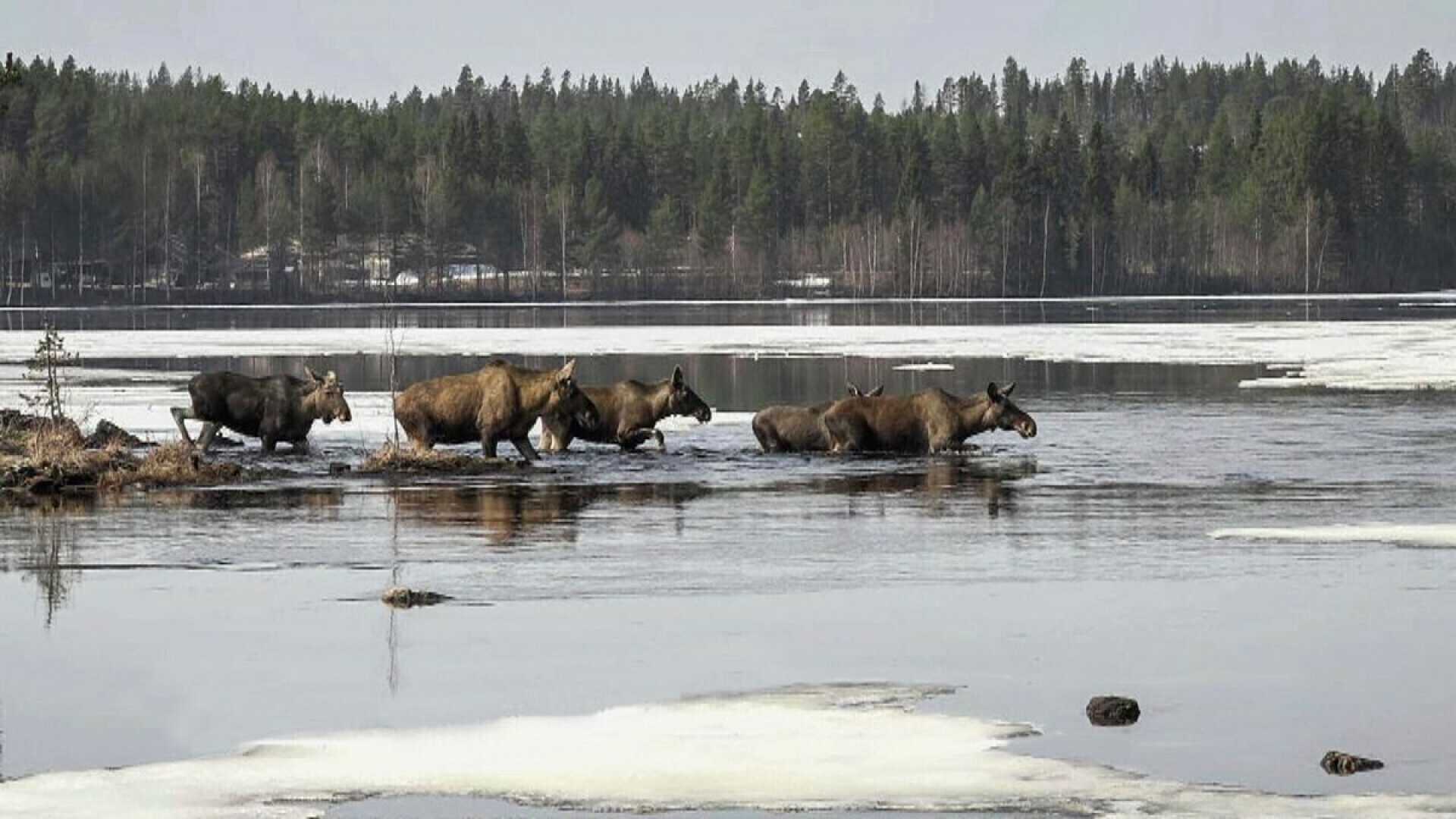Entertainment
Sweden’s Great Moose Migration Captivates Millions in 24/7 Live Stream

STOCKHOLM, Sweden — This week, Sweden’s beloved slow TV series, The Great Moose Migration, returned for another season with fans eagerly tuning in for an uninterrupted, 24/7 livestream that spans 20 days. The show, which commenced on Tuesday a week earlier than scheduled due to warmer weather prompting early moose movement, is projected to draw millions of viewers over its duration.
Sixty-two-year-old Ulla Malmgren exemplifies the dedication of the show’s audience, having stocked her home with coffee and pre-cooked meals to ensure she doesn’t miss a minute. “Sleep? That’s off the table. I just don’t sleep,” she confessed, illustrating the commitment many have to this unique wildlife show.
The Great Moose Migration, known in Swedish as Den stora älgvandringen, first aired in 2019 and has seen spectacular growth in popularity, with more than 9 million streams reported last year alone on SVT Play, Sweden’s national broadcaster’s streaming platform. The program showcases the annual migration of moose as they traverse their habitat, including a significant crossing of the Ångerman River, located approximately 187 miles northwest of Stockholm.
“I feel super calm, but also hyper-aware—like, ‘Was that a moose?!’” said 20-year-old fan William Garp Liljefors, who has collected over 150 moose plushies since joining the fandom in 2020. Such sentiments reflect the comforting yet exciting nature of this slow TV phenomenon, which captivates viewers despite hours of stillness.
The rise of slow TV programming can be traced back to 2009 when Norway’s NRK broadcast a seven-hour train ride, setting the stage for similar initiatives worldwide. Recently, Netherlands viewers enjoyed a “fish doorbell” livestream that allows them to alert authorities when migrating fish face obstacles.
Annette Hill, a media and communications professor at Jönköping University, claims that slow TV offers a tranquil experience, devoid of the staged chaos inherent in reality shows. “It’s oddly captivating,” she noted. “There’s no chaos, no spectacle—just quiet beauty moment by moment. It allows viewers to unwind and experience nature’s rhythms.”
Hill’s insights resonate with the production team’s experiences as well. Johan Erhag, SVT’s project manager for The Great Moose Migration, stated, “Everyone who works on it feels their stress levels drop,” highlighting the calming effect of the show on both audiences and crew members alike.
Remote cameras set up along the moose migration route capture the movements of dozens of the animals in real time without disturbing their natural behavior. The production crew has strategically positioned 26 daytime and seven night cameras along with drones for aerial shots, utilizing nearly 12 miles of cable. “We’re bringing them into everyone’s living room,” Erhag remarked about the moose, which are typically elusive creatures in the wild.
For viewers like Hanna Sandberg, 36, the experience of watching the moose in their natural environment is irreplaceable. “Watching them in their natural environment—it’s something you just can’t experience otherwise,” she said. When a moose finally enters the frame after hours of stillness, the excitement is palpable. SVT alerts viewers with a message: “Första älgarna i bild!” or “First moose on camera!” sparking cheers from the audience.
As The Great Moose Migration progresses, fans like Malmgren gather in online communities to share their experiences. Malmgren mused, “I’d love to be a fly on the wall in every living room watching,” indicating the collective enthusiasm among a network of over 76,000 dedicated followers online. As she notes, her friends and family have learned not to disturb her during migration season, recognizing the show’s significance in her daily routine.
The blend of peace, nature, and community surrounding The Great Moose Migration showcases a growing interest in slow TV, affirming that sometimes, the beauty lies not in the busyness of life but in the moments of stillness.












